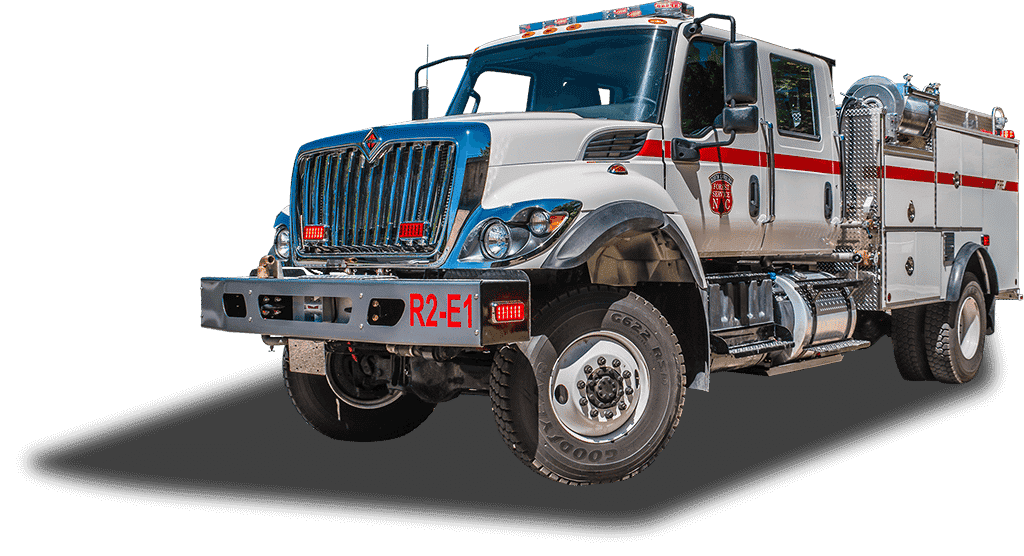How to Prepare and Evacuate for a Wildfire

Prevention
No matter where you live, you may be at risk for wildfires. Several steps can be taken to ensure you are prepared for the unexpected circumstance of a fire while safely evacuating your family from your home. One of the simplest ways for minimizing or preventing wildfire damage to your property is known as fire mitigation. The most effective strategy to improve your home’s chance of surviving a wildfire is by creating defensible space around your property. It is recommended that you create two defensible space zones; a 30 foot and 100 foot zone, within this area you can take steps to reduce potential exposure to flames and radiant heat. Each zone will create a buffer between structures on your property and the grass, trees, shrubs, or any wildland surrounding it. Homes built in pine forests should have a minimum safety zone of 100 feet. If your home sits on a steep slope, standard protective measures may not suffice. Contact your local fire department or forestry office for additional information.  Whether you live in a fire zone or live in the city it is important to have defensible space around your home. Along with defensible space it is also important to consider the following to protect your property and home:
Whether you live in a fire zone or live in the city it is important to have defensible space around your home. Along with defensible space it is also important to consider the following to protect your property and home:
Property Checklist
- Rake leaves, dead limbs and twigs, and clear out all flammable vegetation
- Remove leaves and rubbish from under structures
- Thin a 15-foot space between tree crowns, and remove limbs within 15 feet of the ground
- Remove dead branches that extend over the roof
- Prune tree branches and shrubs within 15 feet of a stovepipe or chimney outlet
- Ask the power company to clear branches from power lines
- Remove vines from the walls of the home
- Mow grass regularly
- Clear a 10-foot area around propane tanks and the barbecue
- Place a screen over the barbecue grill—use non flammable material with mesh no coarser than one quarter inch
- Regularly dispose of newspapers and rubbish at an approved site and follow local burning regulations
- Place stove, fireplace and grill ashes in a metal bucket, soak in water for 2 days; then bury the cold ashes in mineral soil
- Store gasoline, oily rags and other flammable materials in approved safety cans, and place the cans in a safe location away from the base of buildings
- Stack firewood at least 100 feet away and uphill from your home, and clear combustible material within 20 feet
- Use only wood-burning devices evaluated by a nationally recognized laboratory, such as Underwriters Laboratories (UL)
- Review your homeowner’s insurance policy and also prepare/update a list of your home’s contents
Prevention Checklist
- Design and landscape your home with wildfire safety in mind: select materials and plants that can help contain fire rather than fuel it.
- Use fire-resistant or noncombustible materials on the roof and exterior structure of the dwelling, or treat wood or combustible material used in roofs, siding, decking or trim with fire-retardant chemicals.
- Plant fire-resistant shrubs and trees (for example, hardwood trees are less flammable than pine, evergreen, eucalyptus or fir trees)
- Regularly clean roof and gutters.
- Inspect chimneys at least twice a year. Clean them at least once a year. Keep the dampers in good working order. Equip chimneys and stovepipes with a spark arrester that meets the requirements of National Fire Protection Association Standard 211.
- Use 1/8-inch mesh screen beneath porches, decks, floor areas and the home itself. Also, screen openings to floors, roof and attic
- Install a dual-sensor smoke alarm on each level of your home, especially near bedrooms; test monthly and change the batteries at least once each year
- Teach each family member how to use a fire extinguisher (ABC type) and show them where it’s kept
- Keep handy household items that can be used as fire tools: a rake, axe, handsaw or chain saw, bucket and shovel
- Keep a ladder that will reach the roof
- Consider installing protective shutters or heavy fire-resistant drapes
- Clear items that will burn from around the house, including wood piles, lawn furniture, barbecue grills, tarp coverings, etc. Move them outside of your defensible space
- Identify and maintain an adequate outside water source such as a small pond, cistern, well, swimming pool or hydrant
- Have a garden hose that is long enough to reach any area of the home and other structures on the property
- Install freeze-proof exterior water outlets on at least two sides of the home and near other structures on the property. Install additional outlets at least 50 feet from the home.
- Consider obtaining a portable gasoline powered pump in case electrical power is cut off
Preparation
Before a wildfire it is crucial to protect your home and prepare for evacuations. If you live in an area under threat by wildfire, pay attention to official channels for evacuation orders. Make sure every member of your family has a bag packed with essential items to last you multiple days away from home. Along with each members disaster supply kit, make sure you have a family emergency plan and a means of transportation standing by. 
- A 3-day supply of water (one gallon per person, per day) and food that won’t spoil
- A 3-day supply of water and food for each pet in your household
- One change of clothing and footwear per person
- One sleeping bag or blanket per person
- A first aid kit that includes your family’s prescription medications
- Emergency tools including a battery-powered radio, flashlight, and plenty of extra batteries
- An extra set of car keys, credit card, cash, or travelers checks
- Sanitary & hygiene supplies
- Special items for infant, elderly, or disabled family members
- An extra pair of eyeglasses
Once you have each kit packed, maintain them on a yearly basis by replacing expired items and rethinking the necessary contents. Food and cans should be packed and kept in cool, dry places. Keeping emergency kits at home, in your car and at work are all good ideas since you never know where you’ll be when you need to evacuate.
Evacuation
Depending on your evacuation orders, an immediate evacuation of your home may be necessary. If there are evacuations in your area you should monitor local radio and news stations. Be prepared to leave at any time and if asked to evacuate, do so. If you have time prior to evacuating the following four steps will aid in protecting your home and assisting fire fighters in their efforts.
- Keep all doors and windows closed in your home.
- Remove flammable drapes, curtains, awnings or other window coverings.
- Keep lights on to aid visibility in case smoke fills the house.
- If sufficient water is available, turn sprinklers on to wet the roof and any water-proof valuables.
 Along with these items it is important to have an evacuation plan prepared that you and your family members are all familiar with. The checklist below will help your family create the right plan. Each family’s plan will be different, depending on a variety of issues, needs, and situations. Create an evacuation plan that includes:
Along with these items it is important to have an evacuation plan prepared that you and your family members are all familiar with. The checklist below will help your family create the right plan. Each family’s plan will be different, depending on a variety of issues, needs, and situations. Create an evacuation plan that includes:
- A designated emergency meeting location outside the fire or hazard area. This is critical to determine who has safely evacuated from the affected area.
- Several different escape routes from your home and community. Practice these often so everyone in your family is familiar in case of emergency.
- Have an evacuation plan for pets and large animals such as horses and other livestock.
- A Family Communication Plan that designates an out-of-area friend or relative as a point of contact to act as a single source of communication among family members in case of separation. (It is easier to call or message one person and let them contact others than to try and call everyone when phone, cell, and internet systems can be overloaded or limited during a disaster.
The 6 P’s
In the event of a quick evacuation, remember the 6 P’s! By having these items prepared ahead of time, you can grab them on a moments notice and evacuate safely.
- People & pets
- Papers, phone numbers, & important documents
- Prescriptions, vitamins, and eye glasses
- Pictures and irreplaceable memorabilia
- Personal computer, hard drives, and disks
- “Plastic” (Credit Cards, ATM Cards, and Cash)
Prevention is Key
Every year across the U.S., major wildfires test homeowners and firefighters, some homes survive while many others do not. Those that survive almost always do so because their owners had prepared for the eventuality of fire, which is an inescapable force of nature in fire-prone woodland areas. Another way we think of it as, if it’s predictable, it’s preventable! The best way to protect your home and family during a wildfire is by adding prevention and preparation into your routine. There is a lot of steps to take to be prepared but they can make the difference between saving your home and potentially your life. Sources: www.readyforwildfire.org www.familyeducation.com/wildfires-how-prepare-your-family www.readyforwildfire.org/Wildfire-Action-Plan/
Get in Touch
Fields marked with an asterisk (*) are required.



